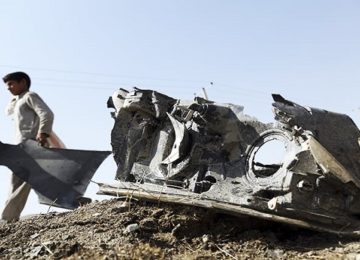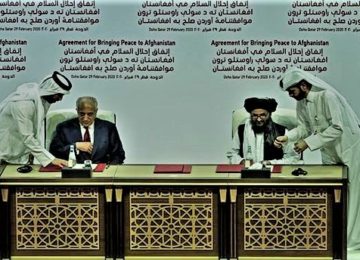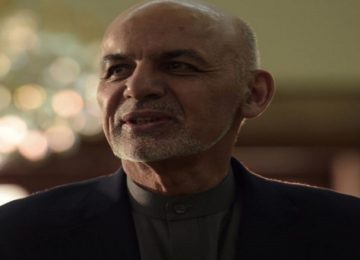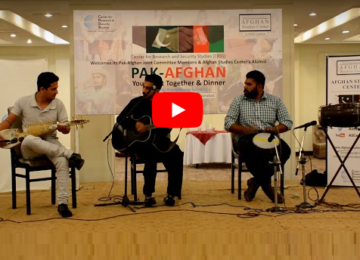U.S. Army General John Nicholson is repeating the dangerous mistakes of the past. In a recent interview he echoed the mantra of his predecessors, that the new U.S. military strategy — which includes increasing both air power and the number of American troops training Afghan forces — has fundamentally changed the situation in Afghanistan. Nicholson, commander of U.S. forces in Afghanistan and head of NATO’s Resolute Support Mission since March 2016, should know better by now.
In 2014, Nicholson’s predecessor, General John Campbell, said that he, too, had “seen the change.” General Joseph F. Dunford referenced “the inevitability of our success” in 2013. His predecessor, General John Allen, declared, “We are winning. We are winning.” In 2011, General David Petraeus said that U.S. forces had “reversed the momentum of the Taliban.” General Stanley A. McChrystal, in 2010, thought that “success is still achievable,” while General David McKiernan, in 2009, observed that the United States was not “losing in Afghanistan.” And on it has gone since U.S.-led forces ousted the Taliban from power in 2001.
U.S. military commanders might have a better sense of what’s really going on if they spent more time visiting civilian medical facilities like Nangarhar Regional Hospital, as I did last December. I interviewed recent air and drone strike victims, like the 15-year-old boy who had to have both feet amputated after an Afghan army helicopter gunship strafed his family’s car while they were on their way to a funeral, killing his aunt and injuring three others.
These endless claims of “victory tomorrow” are bookended by another catchphrase used to dampen expectations: “Afghanistan is not Switzerland.” Foreign military commanders and officials have used one version or another for years. The new U.S. national security adviser, John Bolton, made the comparison to justify U.S. forces working closely with warlords. Petraeus said the United States was not “trying to turn Afghanistan into Switzerland … [just something] good enough for Afghanistan.” And the United Nations Secretary General’s special representative to Afghanistan, Staffan de Mistura, commenting on the prospects for credible elections in 2010 following the tainted 2009 vote, said, “They will not be Swiss elections, they are going to be Afghan elections.”
Lost in all this positioning is the stark fact that since 2009 the war has claimed the lives of 28,291 civilians and injured 52,366. The U.N. notes that those numbers are only the casualties it could confirm. The real numbers are most likely much higher. The Taliban and other insurgents have been responsible for roughly 70 percent of those deaths and injuries, and Afghan government forces and international — largely U.S. — forces have been responsible for the rest—the most recent in Kunduz where an Afghan Air Force attack on the Taliban killed dozens of civilians, including children, at a religious gathering.
The numbers don’t tell the full story, though.
Kabul residents I interviewed live with a constant fear that the next insurgent suicide attack will take their loved ones. Many described the horror of searching hospitals and morgues for relatives after the latest bombing. Similarly, Afghans from rural areas of Nangarhar and Herat told me they live in fear of death from the skies and asked me, “Why can’t they see there are women and children?” before they launch an airstrike. Many have tried in vain to get some official acknowledgement of their loss. After the latest suicide bombing in Helmand, a new protest movement has emerged, calling on all parties to stop the killing.
U.S. officials tout successes, like an operation that killed Qari Hakmat, a dissident Taliban commander who had sworn allegiance to Islamic State in northern Afghanistan, but the escalation in U.S. air operations has not rid the country of groups linked to Islamic State or persuaded the Taliban to “reconcile.” Instead it may have helped spur a tit-for-tat cycle of retaliation, with urban areas taking the brunt of insurgent attacks, something U.S. officials acknowledge. U.S. officials profess to “take all allegations of civilian casualties very seriously.” But U.S. military investigations into civilian casualties rarely include talking to airstrike witnesses. If they did, the generals in charge might better understand why civilians are dying.
The U.S. commander in Afghanistan would have a lot more credibility with ordinary Afghans if he ended U.S. alliances with abusive police chiefs, militia forces and warlords; reinstated and improved on measures that genuinely reduce civilian casualties; and ensured proper compensation and accountability when such casualties occur. That would be a real change Afghans would welcome.
This article originally appeared on Reuters on April 12, 2018. Original link.
Disclaimer: Views expressed on this blog are not necessarily endorsed or supported by the Center for Research and Security Studies, Islamabad.








